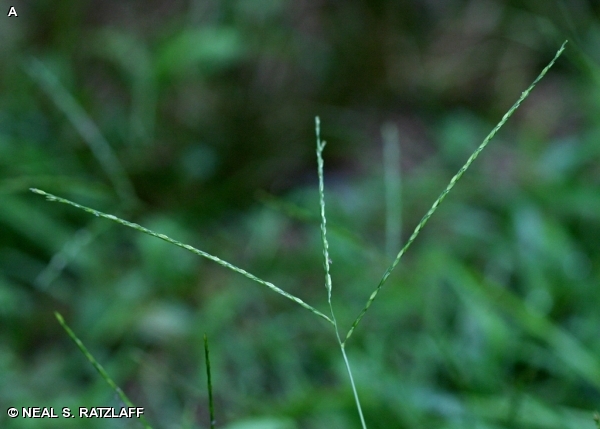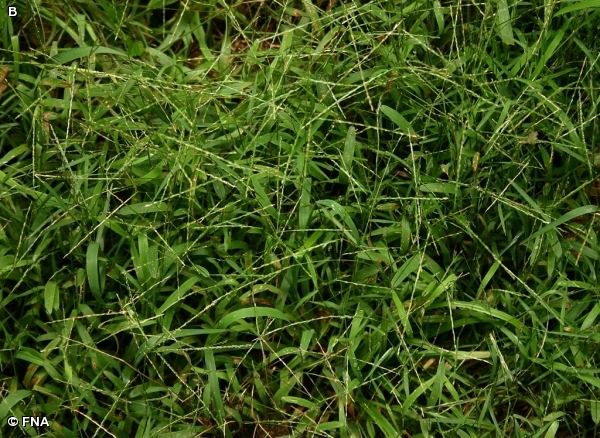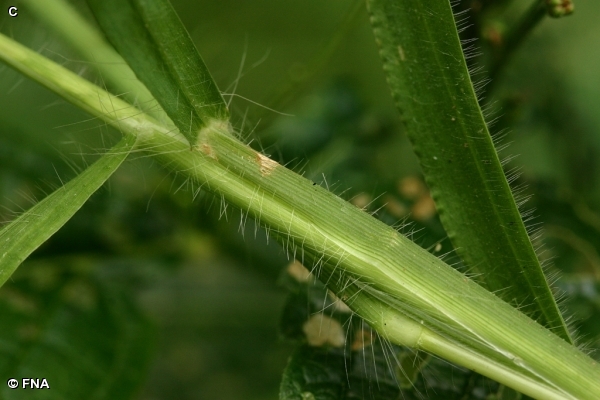
An introduced annual forming loose bunches or mats. Flowering stems up to 2 1/2 feet tall are erect, ascending or reclining and often root at the nodes. Flat leaf blades have prominent midribs and are usually hairless or have just a few hairs near the base. Leaf sheaths are keel shaped and covered with long, soft, white hairs (C). Flower stems have 3-10 flattened branches arising from a single point, (digitate) or along the stem within a short distance of each other (A). Each branch bears 2 rows of spikelets on short stalks.
Closely related Smooth Crabgrass (Digitaria ischaemum) has hairless leaf sheaths. It is by far the most common crabgrass species along our trails. Another very similar species, Hairy Crabgrass (Digitaria sanguinalis), was not identified by the author but is to be expected at FF/NW. It has more hair on the leaves, but other characteristics overlap those of Southern Crabgrass, and these two species cannot be reliably separated without a microscope.
Goosegrass (Eleusine indica) has spreading, whorled branches much like Southern Crabgrass. It grows as a single firmly rooted bunch unlike Southern Crabgrass which usually spreads and roots at the nodes. Also the branches of Southern Crabgrass are much thinner and the spikelets with their single floret much smaller than the Goosegrass spikelets which have 2-9 florets. (See photo H and explanation in the Smooth Crabgrass (Digitaria ischaemum) account.
The content of NatureSearch is provided by dedicated volunteer Naturalists of Fontenelle Forest who strive to provide the most accurate information available. Contributors of the images retain their copyrights. The point of contact for this page is: Neal Ratzlaff.


